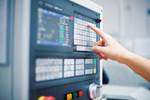Alternative Narratives
On manufacturing topics receiving popular attention, here are the storylines I see.
A recent newspaper headline caught my attention. It said, “The Hot New Manufacturing Trend: CNC Machining.” Of course, CNC is not new. The headline exemplifies a phenomenon I have been seeing for a few years now. Mainstream press coverage of manufacturing, while flattering, often imposes a storyline that is dubious if not false.
Manufacturing has been getting its share of glowing press coverage lately. The President talks about manufacturing, and I regularly find attention given to manufacturing topics in news publications and in radio and TV news. Two topics in particular command much of this media attention: reshoring (the return of manufacturing to the U.S.) and additive manufacturing.
Notably, a single company frequently figures into coverage of both topics: General Electric. I link to examples below, but do your own search through news articles on either topic to see what I mean. GE quite legitimately figures into coverage of reshoring and additive manufacturing because it has made moves in both areas. In its appliance division, manufacturing formerly done in China has been reshored to Kentucky. In its aviation division, jet engine fuel nozzles formerly made by joining various pieces are now made in one piece through additive manufacturing. These are significant and newsworthy developments, but when reporters extrapolate either development into a general trend, the resulting storyline can be a poor fit to the facts.
Or, perhaps my storylines are false. For the sake of offering an alternative, let me lay out what I perceive to be the popular narratives, along with the storylines I would suggest instead.
On reshoring, the popular storyline is that manufacturing formerly sent overseas is now returning in a wave to plants in the United States.
My own view: Work is returning to the U.S., and I’ve seen examples, but in fact the examples are hard to find. (That’s partly why the GE example keeps getting cited.) A lot of manufacturing once sent overseas is now sufficiently established there that it would be hard to relocate. Since then, however, more recent manufacturing choices have been made differently. Today’s level of U.S. manufacturing activity can’t entirely be explained by existing production coming home, but plenty of new production has ramped up for which U.S. manufacturing was seen as the right choice from the beginning. The more significant “reshoring” thus consists of production that never went away.
On additive manufacturing, the popular storyline is that this is the new way products will be made, and that 3D printing will replace processes such as machining.
My own view: Machining is an efficient process that keeps getting more efficient. Cases of machined parts becoming 3D-printed parts are rare. In nearly every case involving a part that was made to be machined, machining will be hard to beat. However, additive manufacturing offers design freedom, and this is why it will win a place in the future. Today’s parts are not the reason why additive manufacturing will advance. Instead, additive manufacturing will advance because of the future parts that engineers have not yet realized they are now able to produce.
Read Next
Obscure CNC Features That Can Help (or Hurt) You
You cannot begin to take advantage of an available feature if you do not know it exists. Conversely, you will not know how to avoid CNC features that may be detrimental to your process.
Read MoreThe Cut Scene: The Finer Details of Large-Format Machining
Small details and features can have an outsized impact on large parts, such as Barbco’s collapsible utility drill head.
Read More3 Mistakes That Cause CNC Programs to Fail
Despite enhancements to manufacturing technology, there are still issues today that can cause programs to fail. These failures can cause lost time, scrapped parts, damaged machines and even injured operators.
Read More
.jpg;width=70;height=70;mode=crop)







.png;maxWidth=300;quality=90)












